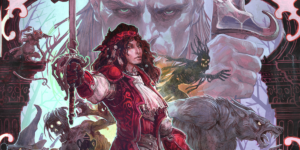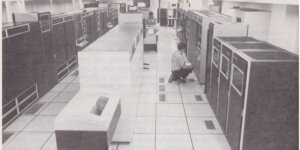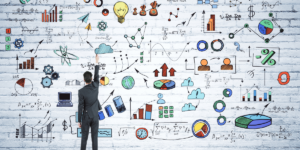
Jay Pujara and Craig Knoblock explore how to improve upon knowledge graphs like Siri.
Whether you’re looking up the weather forecast in Los Angeles or the newest releases playing in theatres around you, knowledge graphs are constantly being used to assist us in understanding and connecting ideas.
Jay Pujara, research assistant professor and research lead at ISI, as well as director of the Center on Knowledge Graphs, and Craig Knoblock, Keston Executive Director of ISI and Vice Dean of Engineering at USC Viterbi, teamed up to tackle the challenge of improving knowledge graphs in a way that’s directed at helping businesses and entrepreneurs.
As a result of their research proposal, Pujara and Knoblock were recipients of the 2020 JP Morgan Faculty Research Award for their proposal titled “Supporting Cognitive Workflows with Hybrid Knowledge Graphs”. The team’s work was one of five award-winning projects in the “AI to Move Employees Up the Value Chain” award category, which received a $150,000 research grant from JP Morgan.
This is the second year of AI Research Awards at JP Morgan. In 2019, Xiang Ren and Yolanda Gil of ISI both received Faculty Research Awards. In addition to the Faculty Research Awards, the JP Morgan Artificial Intelligence Research program also sponsors PhD fellowships and a Distinguished Lecture Series on AI.
Deciphering “Fuzzy” Knowledge
Pujara and Knoblock’s research is centered around the specialization of existing knowledge graphs for entrepreneurs and other businesses.
“Whenever you talk to Siri or Alexa, what they’re really tapping into is a knowledge graph,” said Pujara. “It’s the way all the knowledge in the world is connected.”
This interconnected system of knowledge, also referred to as knowledge graphs, connects and translates data into useful computable resources. Pujara and Knoblock sought to take this process a step further by creating a “hybrid knowledge graph”, one that employs both factual knowledge and “fuzzy” knowledge.
“There’s a whole type of knowledge that we humans take for granted, which is analogical, or similarity-based,” explained Pujara. “Computers and deep learning networks […] are good at capturing that level of fuzziness.”
Pujara defines “fuzzy knowledge” as knowledge that isn’t as straightforward as facts and figures such as, say, who the president of the United States is. Instead, this type of knowledge follows analogical reasoning, which is often under-researched. An analogical model would be able to consider similarities and differences in order to draw connections between data.
Importantly, hybrid knowledge graphs hold the ability to draw similarities and make inferences by relying on “fuzzy” knowledge that isn’t as easily processed as symbolic knowledge. By combining both sets of knowledge into a hybrid knowledge graph, humans are able to demand much more complex information from machines.
Elevating Businesses and Entrepreneurs
Hybrid knowledge graphs have a variety of real-world applications. For one, they can be very useful for start-ups in the business world. Whereas symbolic knowledge can’t offer the answers to many of the nuanced details that a start-up has to confront, hybrid knowledge graphs are able to provide comparable data that can inform the many decisions that a company makes. For example, new businesses are able to use hybrid knowledge to scope out the competing entities that exist and what they offer in order to better improve their own services.
“[We’re] trying to find relatable ideas to help power entrepreneurs understand how they can differentiate themselves competitively,” Pujara said.
On top of market research, these knowledge graphs can also prove useful for analysts and regulators who oversee companies. By referencing patterns in financial news, Pujara and his team are spearheading technologies that can look for inconsistencies in data which set it apart from other companies. This data would then provide potential evidence of corporate wrongdoing or other such activities that need to be addressed.
Moving forward, Pujara and his students are exploring the addition of tabular data into these knowledge graphs in order to facilitate better understanding of data and their relationship to one another. By introducing data in tables, AI bots can draw more inferences between data and users can then ask more complex and analytical questions.
So whether you’re conducting market research as an entrepreneur or you simply want to ask Siri about the weather, it’s important to recognize that many of our demands are heavily reliant on knowledge graphs of some sort. Hybrid knowledge graphs, as pioneered by Pujara and Knoblock, will very likely become the norm for businesses and individuals alike in the near future.
Published on April 20th, 2021
Last updated on April 20th, 2021













